It's Time To Unpack WTF Is Going On With Yeast
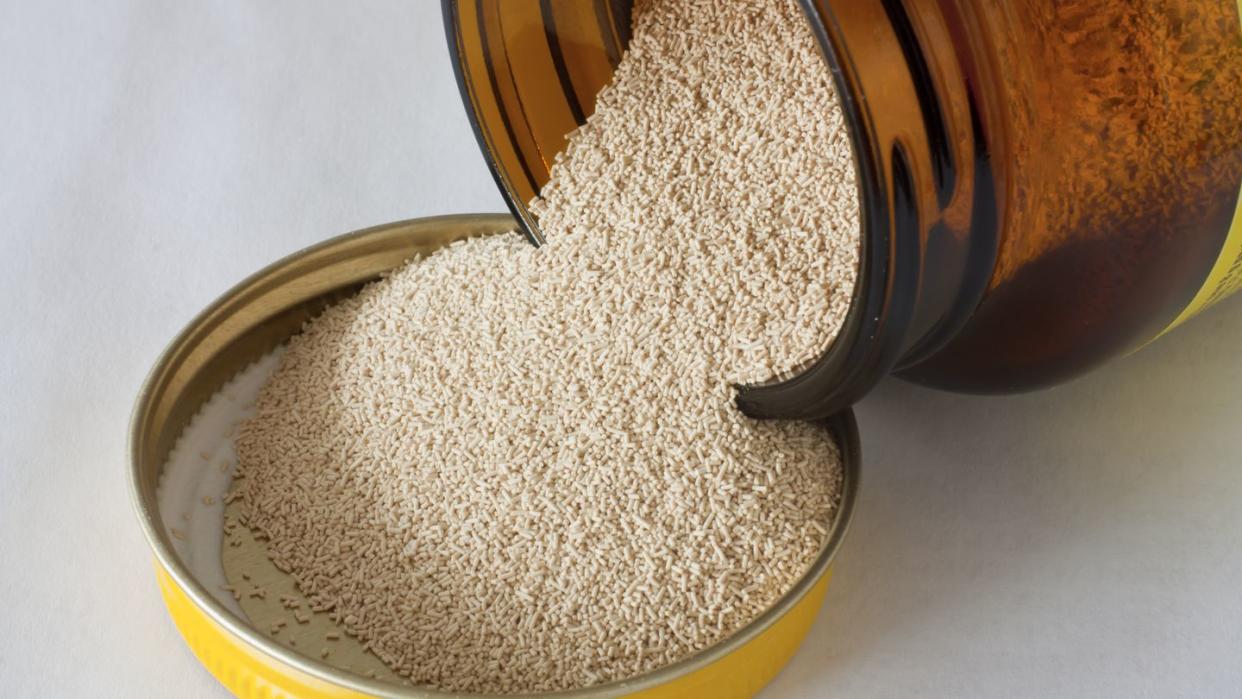
[table-of-contents] stripped
Yeast takes up only a small portion of your supermarket's baking aisle, but it's used way more than you might think. It's the key to making a beautifully proofed loaf of bread. It's the main ingredient to jumpstart fermentation when making beer and kombucha. You can find nutritional yeast sprinkled on popcorn. It's in the very air that we breathe; in fact, there are hundreds of species of yeast floating around you as you're reading this right now.
Yeast has been used in cooking for all of human history, and now it's available in many varieties. But if you're a novice baker or just haven't delved into the world of bread, the transparent amount of yeast options can be overwhelming. Should you buy instant or active dry? How do you store it? How do you know if it's expired?
Thankfully, you don't need to panic. We're here to break down everything you need to know about yeast and how to use it. So the next time you're making a batch of cinnamon rolls or homemade focaccia, you can use yeast with confidence.
What Is Yeast?
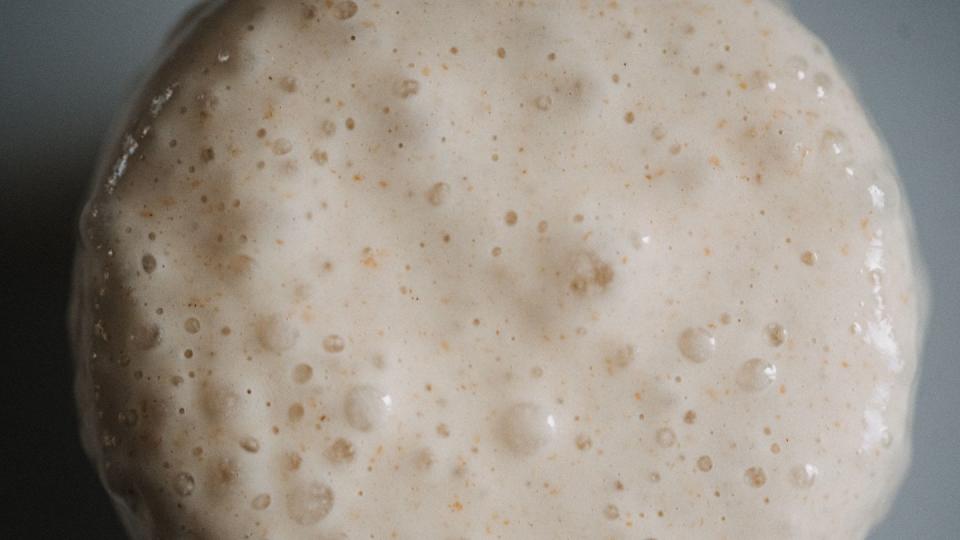
Yeasts are single-celled microorganisms that predate humans by...hundreds of millions of years. There are more than 1,500 species of yeast, but the species we're concerned with today is saccharomyces cerevisiae, derived from Latinized Greek words meaning "sugar-fungus." This group of yeasts includes strains of baker's yeast and brewer's yeast, responsible for producing our favorite carb-heavy treats: bread and alcohol. They work by feeding on sugars and converting them into carbon dioxide (and alcohol, given enough time), giving your baked goods that soft, airy structure you love and your beer bubbles.
What Are The Different Types Of Baker's Yeast?
There are three main types of commercially produced baker's yeast: active dry, instant, and fresh. All of them will work to leaven doughs in any given yeasted baking recipe, but each has slightly different properties, and, for the more discerning palate, varying flavors.
Active Dry Yeast
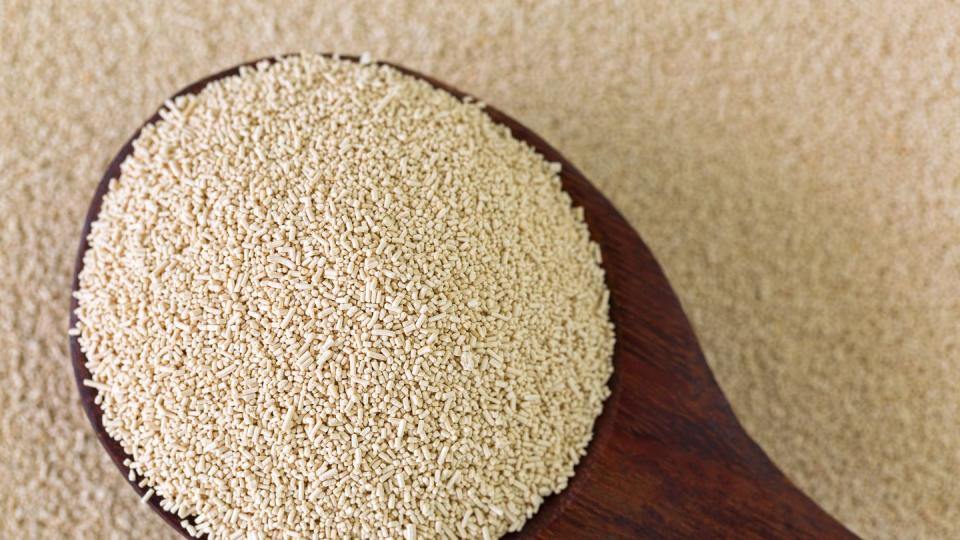
Dry forms of yeast are essentially just live yeast that is partially dehydrated, rendered inert, and ground into granules. Many recipes for home baking projects call for active dry yeast. What makes this type of yeast distinct from other dried varieties is that the granules are larger and need to be dissolved in warm water before they can work their magic.
You'll often find this sold in ¼-ounce packets or a 4-ounce tinted glass jar in the baking aisle. These dormant yeast cells can be stored at room temperature for several months until their expiration date but are heat-sensitive and potency can vary. Be sure to store it away from super warm areas up until the moment you're ready to bake. Active dry yeast will begin to die once exposed to temperatures higher than 120°F. To extend its shelf life, store sealed packets in an airtight bag in the freezer. This will keep the yeast in a more secure state of suspension.
Before being added to your recipe, active dry yeast should be dissolved in lukewarm (between 100°F and 110°F) water or milk to ensure its activity level. If your yeast mixture does not increase in size and becomes foamy in 10 to 20 minutes, your packet was likely DOA and no longer viable. This likelihood is not unthinkable: The manufacturing process for active dry yeast can kill up to 25% of yeast cells.
Active dry yeast has a longer fermentation process when compared to other yeasts, meaning it is best suited for dough recipes that call for a double rise and a longer proofing time.
Instant Yeast
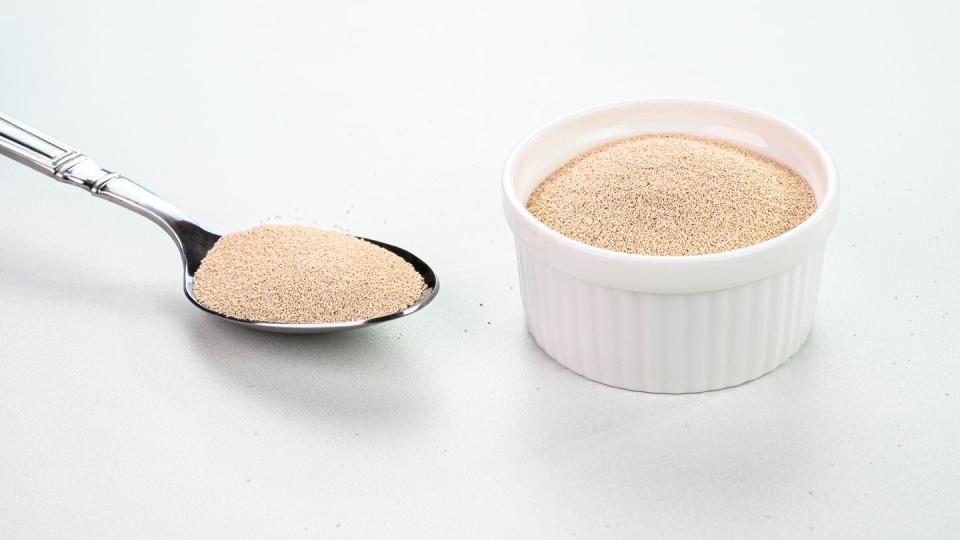
Also known as "bread machine yeast," instant yeast is more shelf-stable and tends to be more reliably and consistently active than active dry yeast (talk about misleading names!). The most popular brand of instant yeast among pro bakers is SAF-Instant, which is sold in a 16-ounce package.
Instant yeast has finer, smaller grains than active dry yeast. This increased surface area allows for a faster rehydration process, and it can be used in recipes without blooming the yeast in a liquid beforehand. (Nonetheless, I still prefer to bloom instant yeast to ensure even distribution in the dough.)
When used in substitution, ¾ teaspoon of instant yeast is equivalent to 1 teaspoon of active dry due to its increased potency and shorter fermentation time. Instant yeast can be stored in the freezer in an airtight container for up to 2 years.
Fast Acting Yeast
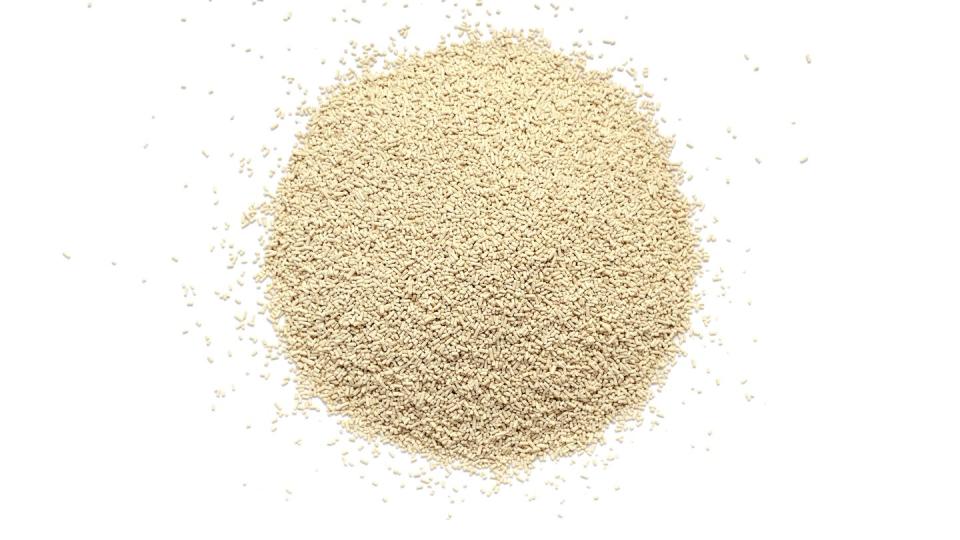
You may see varieties labelled "RapidRise" or "Quick-Rise" and wonder how they are different from other types of yeast on the shelf. These types of yeast, categorized as fast acting, are actually a type of instant yeast. It's just as stable as other forms of instant yeast, but the microorganisms are formulated to activate quickly. It's a great choice for when you're baking but short on time.
The yeast works quickly, but not as long as regular instant or active dry yeast. Recipes that require a single rise, like our homemade pretzels, are the best application for fast acting yeast. But if you need to rise your dough several times, or if you're doing a slow, cold rise in the fridge overnight, you're better off using another type.
Fresh Yeast
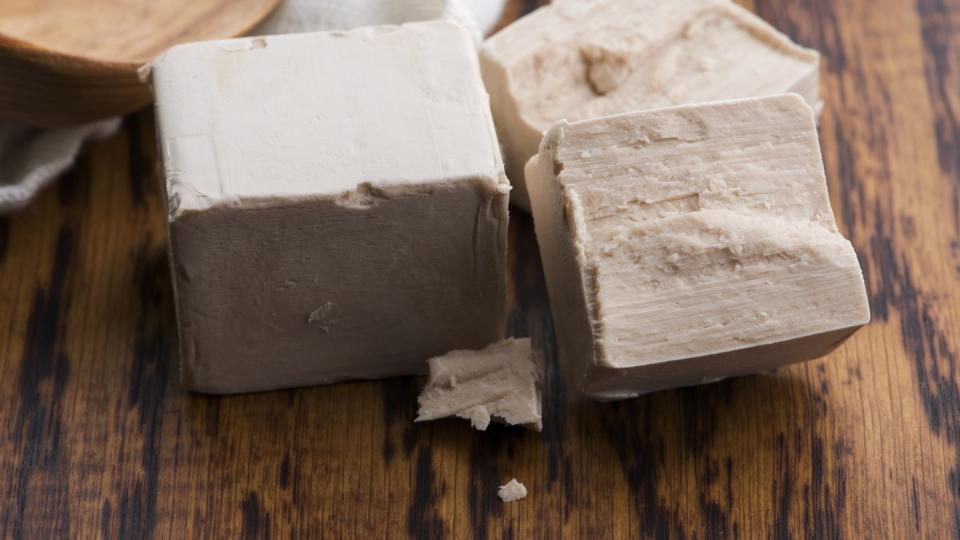
Also known as "cake yeast" and "compressed yeast," fresh yeast comes in big blocks or smaller, individually packaged cubes and can be found in the refrigerated aisle near the dairy products and eggs. It is the only form of commercial yeast that isn't dehydrated: a solid but crumbly concoction of water and yeast, its rubbery texture is halfway between paste and modeling clay.
Due to its high moisture content, this form of yeast is the least shelf-stable, requiring refrigeration and lasting only about two weeks under ideal conditions. If kept in too humid or unclean a container, white tufts of mold can develop within a week and the yeast is no longer safe to use. For longer storage, divide your fresh yeast into individual portions and wrap each piece tightly with plastic wrap before placing in your freezer for up to a year.
Some bakers prefer to use fresh yeast in sweeter recipes, such as donuts, for its more vibrantly yeasty perfume. When used in substitution, 1 ounce of fresh yeast is equivalent to 0.4 ounce of active dry yeast or 0.33 ounce of instant yeast. To substitute for a ¼-ounce packet of active dry yeast, use about ⅔ ounce of cake yeast. To substitute for a ¼-ounce packet of instant yeast, use about ¾ ounce of cake yeast.
Sourdough Starter
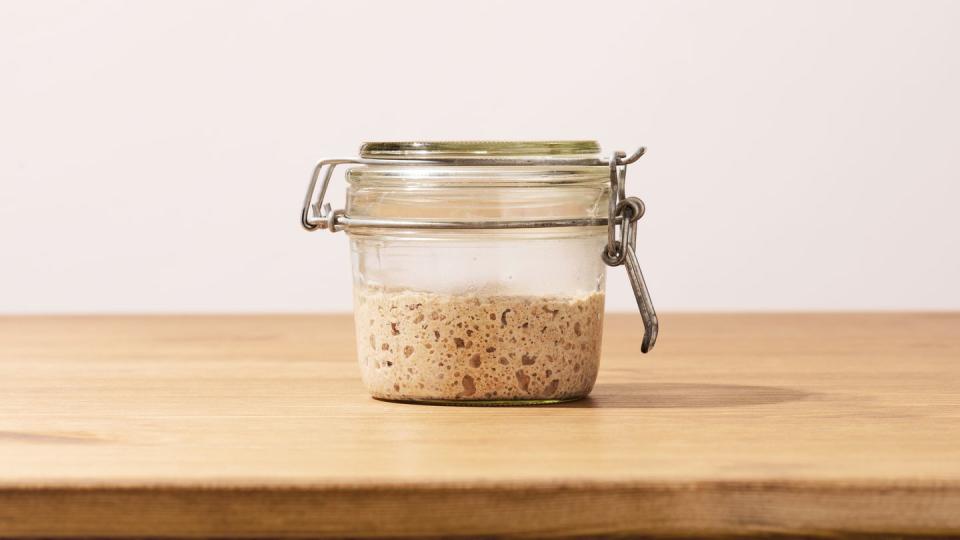
Maybe someone gifted you a bit of their homemade starter. Or perhaps you have a jar of starter still laying around from the sourdough craze of 2020. Compared to commercial yeast, sourdough starter is the least stable and the least consistent form of yeast. It's also the oldest form of yeast that's been used for culinary purposes.
Think of it as a homemade trap to catch the wild yeast that's floating in the air. Starter, which is made of just flour and water, is full of the starches that yeast likes to eat. Eventually, several different species of yeast will set up shop in your jar and proliferate. To keep your starter alive, you need to regularly feed the yeast with more flour and water. And, there's also an inherent risk of getting sick; some of the yeast and bacteria that gets caught in your starter can grow and introduce bad germs into your baked goods.
But why do people even use it, then? The answer: the way it makes food taste. Commercial yeast you can buy at the grocery store uses just one single variety that has a mild flavor. But the unique blend of different bacteria and yeast in a sourdough starter brings a much more complex and nuanced flavor than active dry can provide.
How Can You Tell If Yeast Is Still Good?
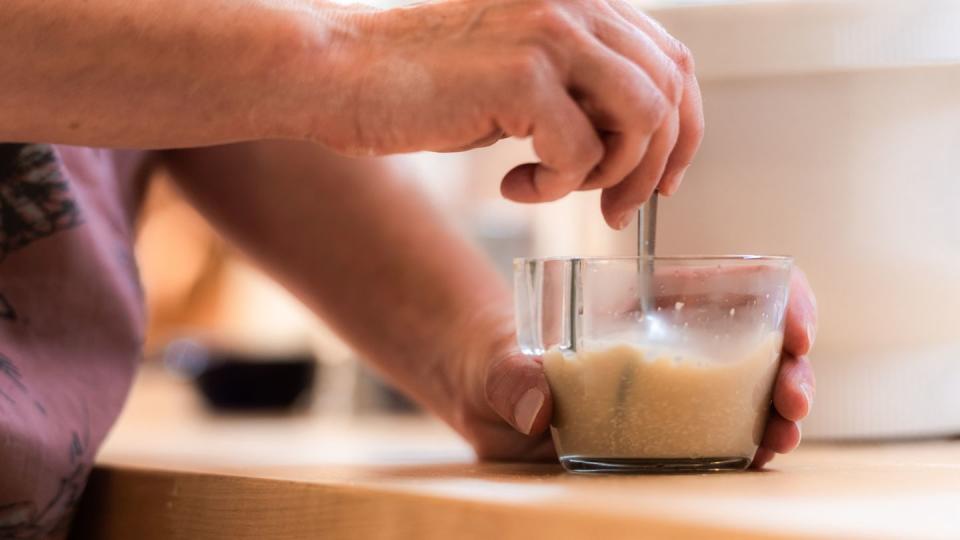
When yeast works, it eats the starches in the flour, releases carbon dioxide, and adds bubbles to your dough to make it rise. If your yeast isn't doing that, it's dead. But that doesn't mean you need to wait hours to see if your yeast is actually doing its job.
The expiration date on your package might be a helpful indicator to see if your yeast is still alive, but the way it's stored may make it expire sooner. The easiest, most effective way to tell if yeast is still good to use is by blooming it in warm water. Beyond just helping the granules dissolve, it also gives you the opportunity to see the yeast activate in real time.
If your yeast is still alive, it will start to foam at the surface of the warm water. That means that the microorganisms are starting to move around and create carbon dioxide. If you check back a few minutes after blooming your yeast and not much has happened, there's a good chance that the microorganisms are dead.
What About Nutritional Yeast?
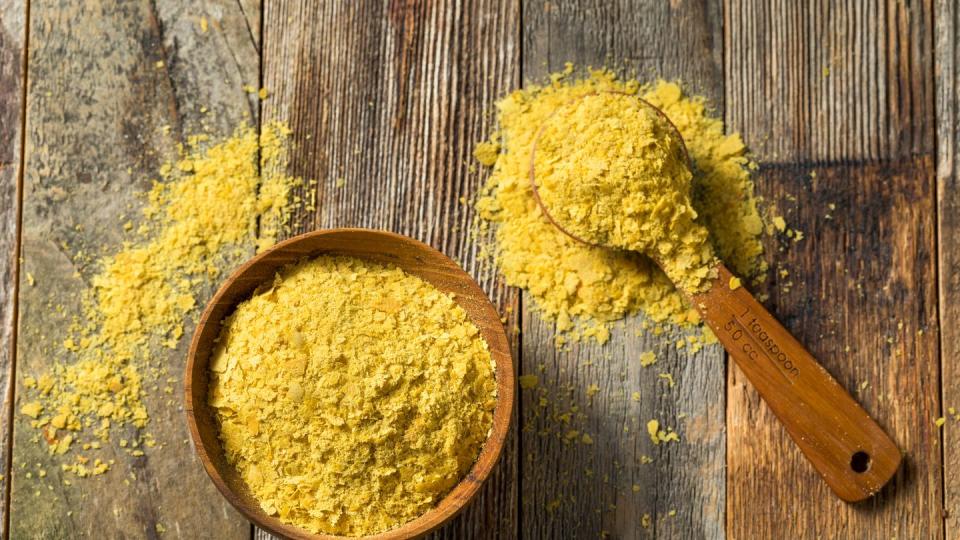
Nutritional yeast is also derived from saccharomyces cerevisiae, but it undergoes a "deactivation" process during which the live yeast cultures are killed by heat. Because the yeast is essentially dead, it can no longer provide leavening magic to your baked goods. It is, however, a delicious seasoning that can provide a salty, cheesy, nutty kick to savory dishes: popcorn, vegan mac and cheese, roasted veggies, fried rice—the list goes on!
Are There Any Yeast Substitutes?
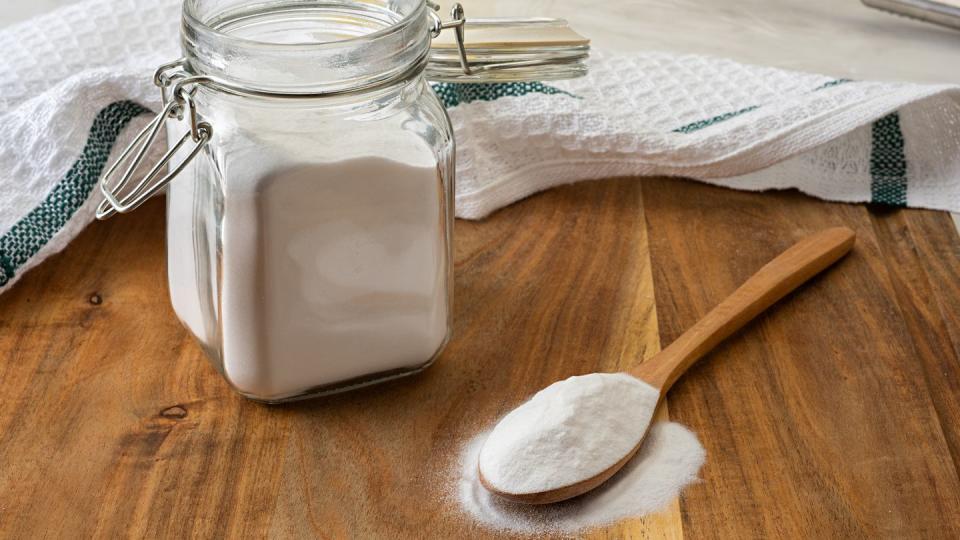
Baking soda, when used alongside an acidic ingredient like lemon juice, vinegar, buttermilk, or brown sugar, will also produce carbon dioxide and can be an effective leavener in baked goods like cakes and cookies. Baking powder, being part baking soda (an alkaline substance) and part cream of tartar (an acidic substance), will undergo similar chemical reactions that produce carbon dioxide: once when it comes into contact with a liquid, and, if it's a double-acting baking powder, a second time when it is heated during the baking process.
While both baking soda and baking powder can help to leaven certain baked goods, neither has the strong lifting power of baker's yeast and both can leave a bitter, soapy aftertaste when used in large amounts. To avoid that unpleasant taste, keep to a maximum of ½ teaspoon of baking soda or 1 ¼ teaspoon of baking powder per cup of flour in any given recipe. If you're inkling to bake something and only have baking soda or baking powder on hand, quick breads and soda breads are great alternatives.
You Might Also Like

